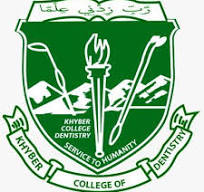POST-TRAUMATIC STRESS DISORDER – A PSYCHOLOGICAL ASPECT OF MAXILLOFACIAL TRAUMA
DOI:
https://doi.org/10.33279/jkcd.v2i1.501Keywords:
Post Traumatic Stress Disorder, Maxillofacial Trauma, Bomb Blast Injuries.Abstract
Objective:The purpose of this study is to find out the incidence of Post-Traumatic Stress Disorder in patients with maxillofacial trauma and to provide a circumstantial evidence for certain precautionary measures which will play a basic role in the prevention and management of Post-Traumatic Stress Disorder amongst such patients.
Material and Methods:The study was carried out at the Department of Oral and Maxillofacial Surgery, Khyber College of Dentistry Khyber Pakhtunkhwa, Peshawar from June 2009 to May 2010. Two hundred and Ninety patients with maxillofacial trauma were recruited in this study. For the collection of data, Post-Traumatic Stress Disorder Checklist Civilian version consisting of 17 items was used. The collected data and all relevant information were analysed using SPSS Version 17.0.
Results:The results of the present study showed that out of 290 patients, 90 patients (31.03%) had PostTraumatic Stress Disorder symptoms in which 40(44.44%) were males and 50 (55.56%) were females. The largest age group suffered from Post-Traumatic Stress Disorder symptoms were 16-25 years and 26-35 years (33.33% each). Thirty four patients (37.78%) scored 50 or above on Check list indicating severe symptoms, where 27 females (30%) had severe symptoms as compared to 7 males (7.78%). Young patients between ages 16-35 were the most common group who suffered from severe symptoms. The severe symptoms of Post-Traumatic Stress Disorder were seen in victims of road traffic accidents and bomb blast injuries (22.22% and 13.33% respectively) with poor and middle socioeconomic status.
Conclusion:The importance of psychological morbidity after major trauma is continuing to gain attention in trauma outcomes research. Taking into account the burden of psychological consequences of maxillofacial trauma, further research and preventive strategies are needed to cope with this hidden epidemic in our society.
Downloads
Published
How to Cite
Issue
Section
License
Copyright (c) 2011 Basheer Rehman, Qiam ud Din, Syeda Nadia Shah

This work is licensed under a Creative Commons Attribution-NonCommercial-NoDerivatives 4.0 International License.
You are free to:
- Share — copy and redistribute the material in any medium or format
- Adapt — remix, transform, and build upon the material
- The licensor cannot revoke these freedoms as long as you follow the license terms.
Under the following terms:
- Attribution — You must give appropriate credit , provide a link to the license, and indicate if changes were made . You may do so in any reasonable manner, but not in any way that suggests the licensor endorses you or your use.
- NonCommercial — You may not use the material for commercial purposes .
- No additional restrictions — You may not apply legal terms or technological measures that legally restrict others from doing anything the license permits.










